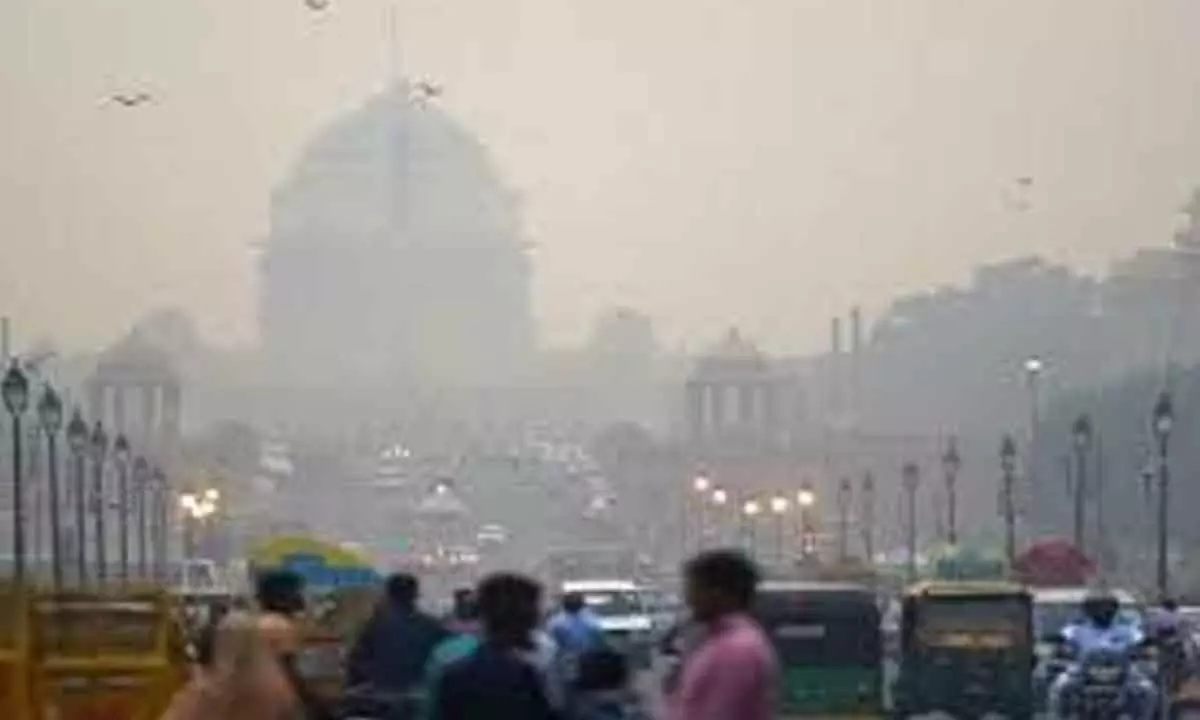Delhi most polluted city in India in 2022: NCAP Tracker

Delhi was the most polluted city in India in 2022 with PM 2.5 levels more than double the safe limit and the third highest average PM10 concentration, according to an analysis of Central Pollution Control Board data. PM2.5 pollution in the national capital has reduced by over 7 per cent in four years, from 108 micrograms per cubic metre in 2019 to 99.71 micrograms per cubic metre in 2022, the report by NCAP Tracker said.
New Delhi: Delhi was the most polluted city in India in 2022 with PM 2.5 levels more than double the safe limit and the third highest average PM10 concentration, according to an analysis of Central Pollution Control Board data. PM2.5 pollution in the national capital has reduced by over 7 per cent in four years, from 108 micrograms per cubic metre in 2019 to 99.71 micrograms per cubic metre in 2022, the report by NCAP Tracker said.
However, it still remains way below the desired level. The government's flagship National Clean Air Programme (NCAP) targets to reduce pollution by 20 per cent to 30 per cent by 2024 (as compared to 2017 levels). NCAP Tracker is a joint project of news portal Carbon Copy and a Maharashtra-based start-up 'Respirer Living Sciences' and is designed to track India's progress in achieving clean air targets. The Centre launched NCAP on January 10, 2019 to reduce PM2.5 and PM10 levels in 102 cities by 20 per cent to 30 per cent by 2024 (with 2017 being the base year).
Some more cities were added to the list, while some were dropped subsequently. Now there are 131 cities which are called non-attainment cities, as they did not meet the national ambient air quality standards (NAAQS) for the period of 2011-15 under the National Air Quality Monitoring Programme. In September 2022, the government set a new target of a 40 per cent reduction in particulate matter concentration by 2026. The top four cities with the highest PM2.5 are Delhi and NCR cities and the top nine are from across the Indo-Gangetic plains, the data showed. Among the most polluted cities with respect to PM2.5 levels, Delhi (99.71 micrograms per cubic metre) ranked first, Haryana's Faridabad (95.64 micrograms per cubic metre) ranked second and Uttar Pradesh's Ghaziabad (91.25 micrograms per cubic metre) third, according to the analysis of CPCB data. PM2.5 is tiny particulate matter that is less than 2.5 microns in diameter and can enter the lungs and bloodstream. Ghaziabad (217.57 micrograms per cubic metre) was the most polluted non-attainment city in the country in terms of PM10 levels, while Faridabad (215.39 micrograms per cubic metre) ranked second and Delhi (213.23 micrograms per cubic metre) stood third.
In 2021, Ghaziabad was the most polluted with respect to PM2.5 levels while it ranked third in terms of PM10 levels. The country's current annual average safe limits for PM2.5 and PM10 are 40 micrograms per cubic metre and 60 micrograms per cubic metre, respectively. "Trend analysis of air pollution levels of cities across the country show that there is marginal improvement in air quality in 2022, especially when we observe the data from 2019 to 2022. Even today, air quality across cities in north India remains very poor to severe.
The top four cities with the highest PM2.5 are Delhi and NCR cities and the top nine are from across the Indo-Gangetic plains," said Aarti Khosla, Director, Climate Trends. "While the CPCB has already issued stricter reduction targets for the non-attainment cities, we are just a year away from 2024, the original target for NCAP. Many cities are still far from reaching their reduction targets and may be unable to do so without aggressive plans and stringent measures," she said.














